HIPAA Compliance for Small & Medium Healthcare Practices: A Practical Guide

Introduction: Why HIPAA Still Matters—Even More Than Ever
In today’s digital-first healthcare ecosystem, safeguarding patient data is no longer optional—it’s a legal and ethical necessity. The Health Insurance Portability and Accountability Act (HIPAA) was enacted in 1996 with the mission of protecting sensitive patient health information from being disclosed without consent or knowledge. While large hospital chains and medical conglomerates usually have dedicated compliance departments, small and medium-sized healthcare practices often face unique challenges.
With limited resources, fewer personnel, and increasing pressure to digitize operations, small and medium healthcare providers are often caught in a balancing act—trying to deliver exceptional care while staying on the right side of stringent data privacy regulations. Unfortunately, a single misstep can lead to hefty fines, lawsuits, and a damaged reputation.
And yet, HIPAA compliance doesn’t have to be a complicated, expensive process.
This blog is your practical guide to HIPAA compliance for small and medium healthcare practices. Whether you’re running a family clinic, dental office, therapy center, or private practice, this post will walk you through what HIPAA really requires, how to implement it without breaking the bank, and how to turn compliance into a competitive advantage.
What is HIPAA? A Quick Refresher
HIPAA is a U.S. federal law that sets the standard for protecting Protected Health Information (PHI). It applies to all healthcare providers, health plans, and healthcare clearinghouses that transmit health information electronically—also known as “covered entities.” It also extends to business associates that handle PHI on behalf of covered entities.
HIPAA consists of several key rules:
Privacy Rule – Governs who can access and share PHI.
Security Rule – Requires administrative, physical, and technical safeguards for electronic PHI (ePHI).
Breach Notification Rule – Mandates that patients be notified in case of a data breach.
Enforcement Rule – Outlines penalties for non-compliance.
Why HIPAA Compliance Is Especially Critical for Small & Medium Practices
You're Not Too Small to Be Fined
Many smaller practices assume they fly under the radar. But the Department of Health and Human Services (HHS) and the Office for Civil Rights (OCR) have been cracking down on practices of all sizes. A single breach could cost you $100 to $50,000 per violation, with total penalties reaching into the millions.
Patient Trust Is Your Biggest Asset
Unlike larger organizations, your practice relies heavily on word-of-mouth and local reputation. A breach could severely undermine the trust you’ve spent years building.
Cybersecurity Threats Are on the Rise
Hackers don’t discriminate by size. Small clinics are often seen as low-hanging fruit because they usually lack robust cybersecurity infrastructure.
Cloud Tools & Telehealth Bring New Risks
Using digital tools, especially during and after the pandemic, means more ePHI is being stored and transferred electronically. These tools must be HIPAA-compliant by design.
Steps to Achieve HIPAA Compliance
1. Conduct a Risk Assessment
This is the foundation of your compliance strategy. Identify where PHI is stored, transmitted, or accessed in your practice. Look for vulnerabilities—whether technical (like weak passwords), physical (like unlocked file cabinets), or administrative (like lack of training).
Tip: Use HHS’s free Security Risk Assessment Tool for small healthcare providers.
2. Develop Policies and Procedures
Create written policies that align with HIPAA rules. These should cover:
How you handle patient data
How access is granted and revoked
What to do in case of a breach
How you train employees
Keep these documents updated and accessible to your staff.
3. Train Your Staff
Human error is the leading cause of data breaches. All employees—even receptionists and part-time workers—must be trained on HIPAA basics, including:
What qualifies as PHI
How to handle patient records
How to spot phishing attempts
How to report incidents
Tip: Consider annual training with quizzes or sign-offs to prove compliance.
4. Secure Your Technology
Ensure that your digital infrastructure is HIPAA-compliant. This includes:
Encrypted emails and devices
Strong access controls and authentication
Regular software updates and firewalls
Secure cloud storage and backups
If you use third-party tools (EMR, billing software, etc.), ensure they provide Business Associate Agreements (BAAs) that guarantee HIPAA compliance.
5. Prepare a Breach Response Plan
No system is 100% breach-proof. A strong incident response plan can help you contain damage quickly and stay compliant.
Your plan should include:
Who to notify internally
What steps to take to contain the breach
How and when to notify patients (within 60 days if over 500 individuals are affected)
6. Maintain Documentation
Always keep records of:
- Risk assessments
- Training completion
- Policies and procedures
- Audit logs and access records
- Breach notifications and mitigation steps
- This documentation will be essential if you’re ever audited.
Common Mistakes Small Practices Make (And How to Avoid Them)
Assuming Your EHR Vendor Handles Everything
Even if your software is HIPAA-compliant, you are responsible for how you use it. Always sign a BAA and ensure your internal processes align with HIPAA.
Using Personal Devices Without Proper Safeguards
If staff access PHI via phones or laptops, ensure those devices are encrypted, password-protected, and used in secure networks.
Not Updating Policies as You Grow
Your HIPAA strategy must evolve with your practice. New staff, new tools, and new workflows all require updates to your compliance plan.
Ignoring Physical Security
Leaving charts in open areas, unlocked filing cabinets, or unattended screens can all lead to HIPAA violations.
HIPAA as a Competitive Advantage
Instead of viewing HIPAA as just a legal obligation, consider how it can enhance your practice:
- Use your compliance as a trust-building tool. Let patients know their data is safe.
- Differentiate your practice by showing your commitment to privacy and security.
- Be ready for growth—HIPAA compliance is foundational to scaling ethically and legally.
Conclusion: Compliance is Protection—For You and Your Patients
HIPAA compliance isn’t just about avoiding fines—it’s about safeguarding the trust your patients place in you every day. For small and medium healthcare practices, it can feel like an uphill battle, but the good news is: with the right mindset, tools, and a step-by-step approach, HIPAA compliance is entirely achievable.
Start with a risk assessment, implement practical safeguards, train your team, and choose partners who take compliance as seriously as you do. In doing so, you not only protect your practice from legal risks but also show your patients that their privacy is your priority.
After all, in a world where data is the new currency, trust is your most valuable asset—and HIPAA compliance is the vault that protects it.
Let me know if you’d like this blog formatted for your website, or if you need a downloadable version (PDF/Word) for outreach or print use!



